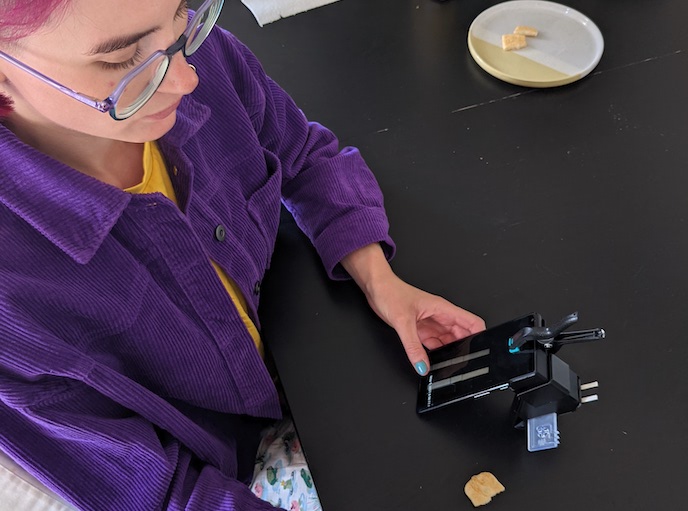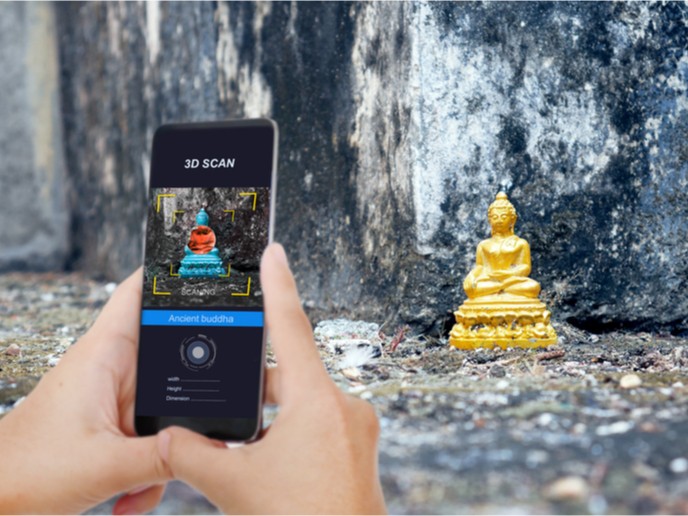Smartphone analysis to revolutionise on-site food testing
Carrying out food tests can be a long, drawn-out process. Typically, this involves inspectors visiting farms, restaurants and shops to collect samples, completing a great deal of documentation and then sending all this to centralised laboratories for screening. “A very low percentage of samples come back as non-compliant,” notes FoodSmartphone(opens in new window) project coordinator Michel Nielen, professor of Analytical Chemistry at Wageningen University & Research(opens in new window) in the Netherlands. “This is obviously very good news for consumers, but it means that the process itself is not very cost-effective or efficient. Documenting and transporting all these samples also takes time, which can limit the effectiveness of any responses to contamination.”
Efficient food sampling
The FoodSmartphone project was undertaken with the support of the Marie Skłodowska-Curie Actions(opens in new window) programme. It sought to address these inefficiencies by harnessing the power of the smartphone, and bringing the lab to the sample site. This was achieved by combining bioanalytical sensing(opens in new window) and diagnostics with the imaging, computational and communication power of smartphone devices. Together, they provide food inspectors and analysts with effective and efficient tools to determine – and immediately record – results. New instruments, such as biorecognition tools with electrodes that can be plugged into a smartphone, have been developed. An emphasis was also placed on accelerating detection speeds, allowing results to be recorded quickly and in real time. “These are tools that can be used by experts outside the lab environment,” explains Nielen. Tests can then be disseminated securely, using blockchain technology, to decision makers and relevant stakeholders. Recording the time and location of each sample also enables professionals to identify geographic patterns in food contamination occurrences. The ambitions of the FoodSmartphone project do not stop here, however. Nielen envisages a future in which citizens are able to carry out rapid food tests at home as well. The key challenge, he says, will be simplifying sampling procedures so that they can be used by non-experts. To this end, the project developed a prototype analysis device for detecting nut allergens in cookies. A handheld device crushes the cookie and soaks the crumbs in a reagent; this mixture is then analysed using test strips that are 3D-printed(opens in new window) from a box that clicks onto the smartphone. “The process was so simple that a 15-year-old with no connection to the project was able to carry it out,” says Nielen. “We gave him a page of instructions in picture form, and he was able to run the test.”
Smartphone-enabled future
Nielen is confident that smartphone-enabled food analysis will be the future. While the innovations pioneered by this project are still a few years away from commercialisation, Nielen and his team have successfully shown that the technology works, and that ordinary citizens are fully capable of running tests. A next step would be to run larger field trials with food inspectors and different types of citizens, to collect more data and feedback. Nielen notes that the project consortium was recently approached by a major food company, interested in seeing whether food allergy test kits could be further developed both for industry and for end users. “Policymakers are also beginning to discuss the need for more on-site testing and harnessing of technology,” adds Nielen. “We are seeing the language of the FoodSmartphone project being rapidly adopted, and our entire philosophy being absorbed by decision makers.”







